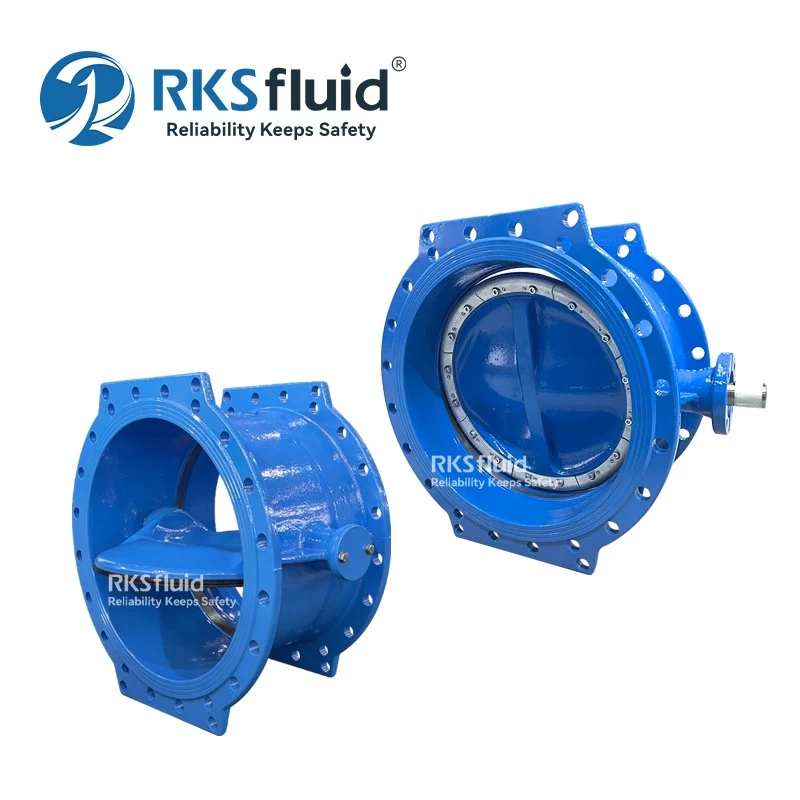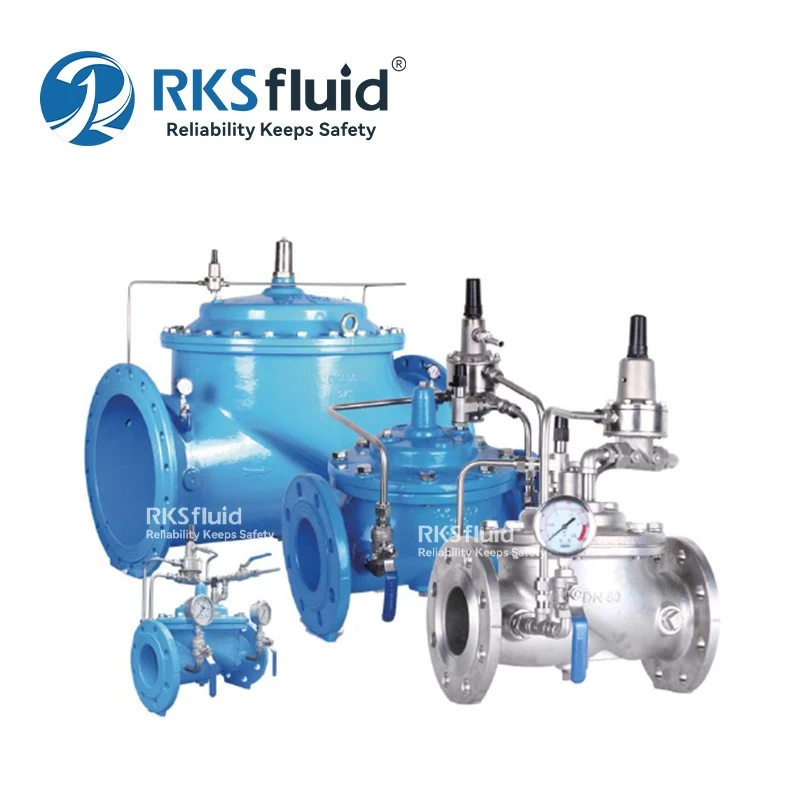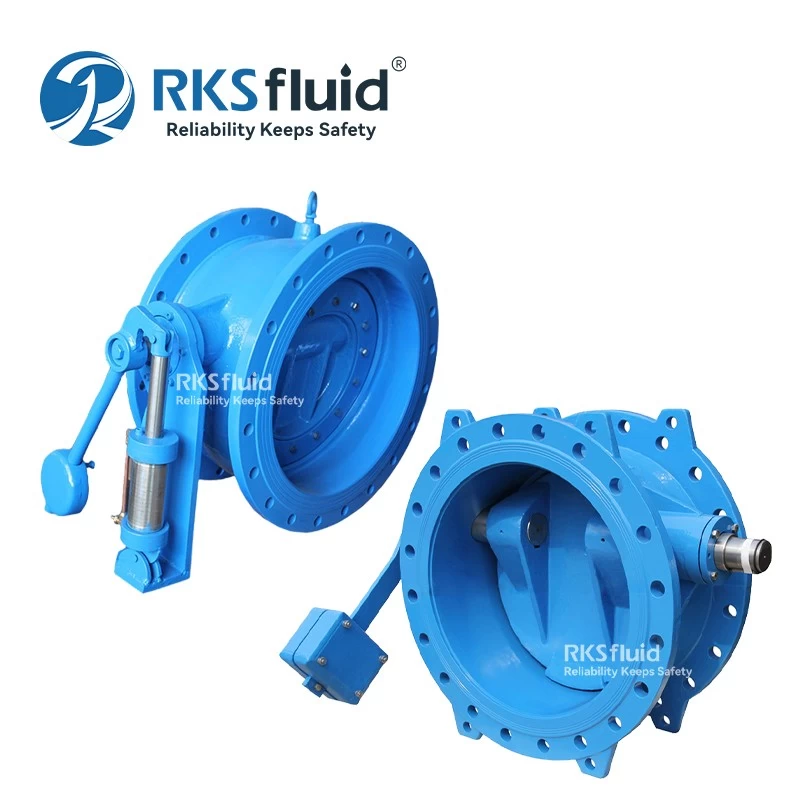- Main Product
- Contact Us
-
RKSfluid Flow Control Company
Web: www.rksfluid.com
Tel: +86 24 2318 0188
Fax: +86 24 2318 0788
Mail: info@rksfluid.com Contact Now
- Subscribe
-
Get email updates on new products
News
Twenty-five Taboos for Valve Installation
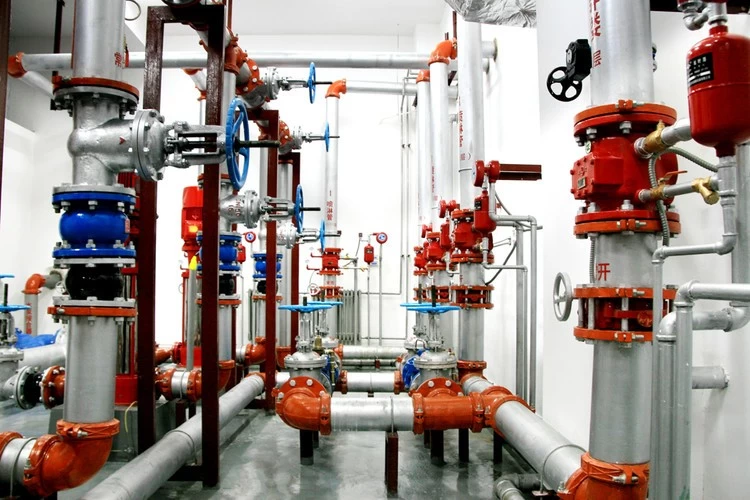
Taboo 1
The water pressure test was carried out at a negative temperature in winter construction.
Consequences: The tube freezes quickly due to the rapid freezing of the tube during the hydrostatic test.
Measures: Try to carry out the hydrostatic test before the winter application, and blow the water after the pressure test, especially the water in the valve must be removed to the net, otherwise the valve will rust and lightly crack.
The project must be carried out at a positive temperature in the room during the hydrostatic test in winter, and the water should be blown off after the test.
Taboo 2
Flushing is not serious before the completion of the piping system, and the flow rate and speed are not up to the pipeline flushing requirements. Even flushing with water pressure test leaks instead of flushing.
Consequences: Water quality does not meet the requirements of pipeline system operation, and often results in reduced or blocked pipe sections.
Action: Flush with the maximum juice flow rate in the system or the water flow rate should not be less than 3m/s. It should be qualified according to the water color of the discharge port, the transparency and the water color and transparency of the inlet water.
Taboo 3
Sewage, rainwater, and condensate pipes are concealed without a closed water test.
Consequences: May cause water leakage and cause user losses.
Measures: The closed water test work should be checked and accepted in strict accordance with the specifications. Concealed sewage, rainwater, condensate pipes, etc., buried underground, suspended ceilings, pipes, etc., must be ensured without leakage.
Taboo 4
In the hydraulic pressure test and the tightness test of the pipeline system, only the pressure value and the water level change are observed, and the leakage inspection is insufficient.
Consequences: Leakage occurs after the pipeline system is in operation, affecting normal use.
Measures: When the pipeline system is tested according to the design requirements and construction specifications, in addition to recording the pressure value or water level change within the specified time, it is especially necessary to carefully check whether there is leakage.
Taboo 5
Butterfly valve flanges use ordinary valve flanges.
Consequences: The size of the butterfly valve flange and the ordinary valve flange are different. Some flanges have a small inner diameter, and the butterfly valve has a large valve flap, which causes the valve to be broken or hard to open.
Action: Machine the flange according to the actual size of the butterfly valve flange.
Taboo 6
There are no reserved holes and embedded parts in the construction of the building structure, or the reserved holes are small in size and the embedded parts are not marked.
Consequences: During the construction of the heating and sanitation project, the building structure is cut and even the stressed steel bars are cut, which affects the safety performance of the building.
Measures: Conscientiously familiar with the construction drawings of the heating and sanitation project, and actively and conscientiously cooperate with the construction of the structural structure to reserve the holes and embedded parts according to the needs of the installation of the pipeline and the supporting hangers, with specific reference to the design requirements and construction specifications.
Taboo 7
When the pipe is welded, the wrong port of the opposite pipe is not on a center line, no gap is left in the opposite port, and the thick-walled pipe does not shovel the groove. The width and height of the weld are not in conformity with the construction specifications.
Consequences: The misalignment of the pipe does not directly affect the quality of the weld and the quality of the look and feel in a center-line. There is no gap in the mouth, and the thick-walled pipe does not shovel the groove. If the width and height of the weld do not meet the requirements, the welding cannot meet the strength requirement.
Measures: After welding the pipe to the mouth, the pipe can not be staggered, it should be on a center line; the gap should be reserved; the thick wall pipe should be shovel. In addition, the width and height of the weld shall be welded in accordance with the specifications.
Taboo 8
The pipeline is directly buried in the frozen soil and the untreated loose soil. The spacing and position of the pipe butt joints are improper, even in the form of dry bricks.
Consequences: Due to the unstable support of the pipeline, the pipeline was damaged during the tamping process, resulting in rework and repair.
Measures: Pipes should not be buried in frozen soil and untreated loose soil. The distance between the piers should meet the requirements of construction specifications, and the support pads should be firm, especially at the pipe joints, and should not be subjected to shearing forces. Brick piers should be built with cement mortar to ensure completeness and firmness.
Taboo 9
The expansion bolts of the fixed pipe brackets are inferior in material, the apertures of the installation expansion bolts are too large or the expansion bolts are installed on brick walls or even light walls.
Consequences: The pipe support is loose, the pipe is deformed or even falls off.
Measures: The expansion bolts must be selected as qualified products. If necessary, samples should be tested for inspection. The diameter of the installation expansion bolts should not be larger than the outer diameter of the expansion bolts by 2 mm. The expansion bolts are applied to the concrete structure.
Taboo 10
The flanges and gaskets of the pipe connections are not strong enough, and the connecting bolts are short or have a small diameter. The heat pipe uses a rubber mat, and the cold water pipe uses a double pad or a bevel pad, and the flange gasket protrudes into the pipe.
Consequences: The flange connection is not tight, even damaged, and leakage occurs. The flange gasket protrudes into the tube and increases the resistance to water flow.
Measures: Pipe flanges and gaskets must meet the pressure requirements for piping design.
Rubber asbestos mats should be used for the flange gaskets of heating and hot water supply pipes; rubber gaskets should be used for the flange gaskets of water supply and drainage pipes.
The gasket of the flange shall not protrude into the pipe, and the outer circle to the flange bolt hole is suitable. No inclined mat or several gaskets shall be placed in the middle of the flange. The bolt diameter of the connecting flange should be less than 2mm than the flange diameter. The length of the bolt stem protruding nut should be 1/2 of the thickness of the nut.
Taboo 11
The valve installation method is incorrect.
For example, the shut-off valve or check valve water (steam) flow direction is opposite to the sign, the valve stem is installed downward, the horizontally mounted check valve is installed vertically, the open gate valve or the butterfly valve handle has no open and closed space, and the valve stem of the concealed valve Not facing the inspection door.
Consequences: The valve is out of order, the switch is difficult to overhaul, and the valve stem is facing down, which often causes water leakage.
Measures: Strictly install according to the valve installation instructions. The open gate valve stays at the stem opening height. The butterfly valve fully considers the handle rotation space. The various valve stems cannot be lower than the horizontal position, and can not be down. The concealed valve should not only be provided with an inspection door that meets the opening and closing requirements of the valve, but also the valve stem should face the inspection door.
Taboo 12
The specifications and models of the installed valves do not meet the design requirements.
For example, the nominal pressure of the valve is less than the system test pressure; the water supply branch pipe adopts a gate valve when the pipe diameter is less than or equal to 50 mm; the dry water and the riser of the hot water heating adopt a shut-off valve; and the fire pump suction pipe adopts a butterfly valve.
Consequences: affect the normal opening and closing of the valve and adjust the resistance, pressure and other functions. Even when the system is running, the valve is damaged and forced to repair.
Measures: Familiar with the application range of various types of valves, and select the specifications and models of the valves according to the design requirements. The nominal pressure of the valve must meet the requirements of the system test pressure. According to the requirements of construction specifications: the water supply pipe diameter is less than or equal to 50mm should be used as a shut-off valve; when the pipe diameter is greater than 50mm, the gate valve should be used. The hot water heating dry and vertical control valves shall adopt gate valves, and the fire pump suction pipes shall not adopt butterfly valves.
Taboo 13
Do not perform the necessary quality inspection before installation of the valve.
Consequences: The valve switch is not flexible during the operation of the system, the shutdown is not strict and the phenomenon of water leakage (steam) occurs, causing rework and repair, and even affecting the normal water supply (steam).
Measures: Before the valve is installed, the compressive strength and tightness test should be done. The test shall be checked by 10% of each batch (same brand, same specification, same model) and not less than one.
For closed-circuit valves installed on the main pipe, the strength and tightness tests shall be made one by one. The test strength of the valve strength and tightness shall be in accordance with the “Code for Acceptance of Construction Quality of Building Water Supply and Drainage and Heating Engineering” (GB 50242-2002).
Taboo 14
The main materials, equipment and products used in construction lack technical quality appraisal documents or product certificates that meet the current national or ministerial standards.
Consequences: The quality of the project is unqualified, there are hidden dangers of accidents, and it cannot be delivered on time, and must be reworked and repaired; resulting in delays in construction period and increased investment in labor and materials.
Measures: The main materials, equipment and products used in water supply and drainage and heating and sanitation projects shall have technical quality appraisal documents or product certificates that meet the current standards issued by the State or the Ministry; their product names, models, specifications and national quality standards shall be indicated. Code, date of manufacture, manufacturer's name and location, factory product inspection certificate or code.
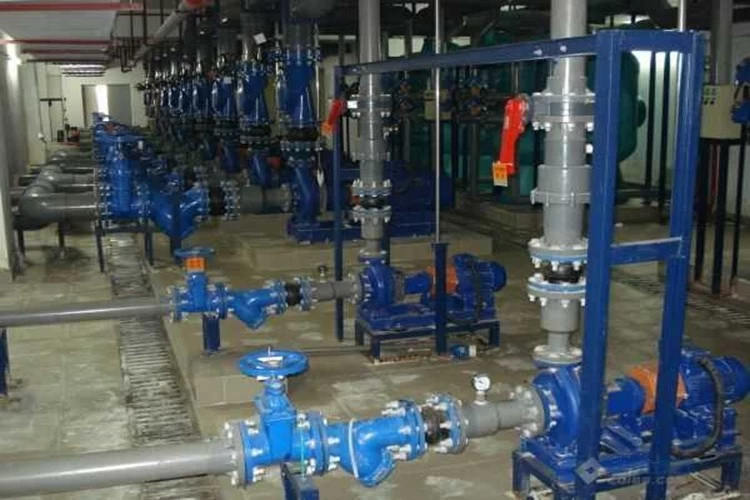
Taboo 15
Valve flip
Consequences: Valves such as check valves, throttle valves, pressure reducing valves, check valves, etc. are directional. If installed in reverse, the throttle valve will affect the effect and life; the pressure reducing valve will not work at all, check valve It can even be dangerous.
Measures: General valve, there is a direction mark on the valve body; if it is not, it should be correctly identified according to the working principle of the valve. The valve chamber of the stop valve is asymmetrical to the left and right, and the fluid should be passed from bottom to top through the valve port, so that the fluid resistance is small (determined by the shape), the labor is turned on (because the medium pressure is upward), and the medium is not pressed after the closing, which is convenient for maintenance. . This is why the stop valve can't be reversed.
Do not flip the gate valve (ie, the handwheel is down), otherwise the medium will remain in the bonnet space for a long time, which will easily corrode the valve stem and is contraindicated for certain process requirements. It is inconvenient to replace the packing at the same time
Open the gate valve, do not install it in the ground, otherwise the exposed valve stem will be corroded due to moisture.
Lifting check valve, the valve flap should be vertical when installing, so that the lifting is flexible.
Swing-type check valve, to ensure the level of its pin when installing, so that the swing is flexible.
The pressure relief valve should be installed upright on a horizontal pipe and not tilted in all directions.
Taboo 16
Manual valve opening and closing, excessive force
Consequences: the valve is damaged, but the safety accident
Measures: The manual valve, its hand-wheel or handle, is designed according to the general manpower, taking into account the strength of the sealing surface and the necessary closing force. Therefore, you cannot use long levers or long wrenches to move. Some people are accustomed to using the wrench, should pay careful attention, do not use too much force, otherwise it is easy to damage the sealing surface, or the plate breaks the hand wheel, handle. When opening and closing the valve, the force should be stable and not impact. Some components of high-pressure valves that have been opened and closed by impact have been considered such that the impact force cannot be equal to that of a general valve. For steam valves, pre-heating should be carried out before opening, and condensed water should be removed. When opening, it should be as gentle as possible to avoid water hammer. When the valve is fully open, the hand wheel should be reversed a little to make the threads tightly tight to avoid loose damage. For open-end valves, keep in mind the position of the stem when fully open and fully closed to avoid hitting the top dead center when fully open. And it is easy to check whether it is normal when fully closed. If the valve is detached or a large debris is embedded between the valve plug seals, the position of the valve stem will change when fully closed. When the pipeline is used at the beginning, there are many internal dirt, the valve can be slightly opened, and the high-speed flow of the medium is used to wash away the medium, and then gently close (can not be closed quickly and violently closed to prevent residual impurities from pinching the sealing surface). Open again, repeat this many times, flush the dirt and put it into normal work. If the valve is normally open, there may be dirt on the sealing surface. When it is closed, it should be washed clean by the above method, and then officially closed. If the handwheel or handle is damaged or lost, it should be immediately equipped. It should not be replaced by a live wrench, so as to avoid damage to the valve stem, and the opening and closing is not working, resulting in an accident in production. Some media, after the valve is closed, cool, the valve member shrinks, the operator should close again at the appropriate time, so that the sealing surface does not leave a slit, otherwise, the medium flows through the slit at a high speed, it is easy to erode the sealing surface. . When operating, if you find that the operation is too laborious, you should analyze the cause. If the packing is too tight, it can be loosened properly. If the valve stem is skewed, the person should be notified to repair it. In some cases, when the valve is closed, the closing member is heated and expanded, which makes opening difficult. If it must be opened at this time, the bonnet thread can be loosened by half a turn to one turn, the stem stress is eliminated, and then the hand wheel is driven.
Taboo 17
Improper installation of valves in high temperature environments
Consequence: causing a leakage accident
Measures: The high temperature valve above 200 °C, because it is at normal temperature during installation, and after normal use, the temperature rises, the bolt expands and the gap increases, so it must be tightened again, called “heat tight”. The operator should pay attention to this work. Otherwise, it is easy to leak.
Taboo 18
Cold weather does not drain in time
Measures: When the weather is cold, the water valve should be closed for a long time, and the water behind the valve should be removed. After the steam valve is stopped, the condensate should also be excluded. The bottom of the valve is like a wire plug that can be opened to drain.
Taboo 19
Non-metallic valve, too much opening and closing force
Measures: Non-metallic valves, some are hard and brittle, some have low strength. When operating, the opening and closing force should not be too large, especially not to make it strong. Also pay attention to the object of bumping.
Taboo 20
New valve packing pressure is too tight
Measures: When the new valve is used, the packing should not be pressed too tightly, so as not to leak, so that the valve stem is not pressed too much, the wear is accelerated, and the opening and closing is laborious. The quality of the valve installation directly affects the use, so careful attention must be paid to the direction and position of the valve, valve construction operations, valve protection facilities, bypass and instrumentation, and valve packing replacement.
Taboo 21
No operating space in the installation position
Measure: The position of the valve installation must be convenient for operation; even if the installation is temporarily difficult, it is necessary for the long-term work of the operator. It is best to have the valve handwheel and the chest (usually 1.2 meters away from the operating floor), so that the opening and closing of the valve is more labor-saving. The floor valve hand wheel should be facing up, do not tilt, so as to avoid awkward operation. The valve against the wall machine should also leave room for the operator to stand. It is necessary to avoid the operation of the sky, especially acid and alkali, toxic media, etc., otherwise it is very unsafe.
Taboo 22
Valve made of impact brittle material
Measures: Care must be taken during installation and construction. Do not hit the valve made of brittle material. Before installation, the valve should be inspected, check the specifications and models for damage, especially for the valve stem. Also turn a few times to see if it is skewed, because it is most likely to hit the valve stem during transportation. Also remove debris from the valve. When the valve is lifted, the rope should not be attached to the handwheel or the valve stem to avoid damage to these parts and should be attached to the flange. Always clean the piping connected to the valve. Compressed air can be used to blow off iron oxide chips, mud sand, welding slag and other debris. These debris not only easily scratch the sealing surface of the valve, but also large particles (such as welding slag) can also block the small valve and make it invalid. When installing the screw valve, the sealing packing (line linen plus lead oil or Teflon raw material belt) should be wrapped on the pipe thread, and should not be put into the valve to avoid the valve memory accumulation and affect the circulation of the medium. When installing a flanged valve, pay attention to tightening the bolt symmetrically and evenly. The valve flange and the pipe flange must be parallel and the clearance is reasonable to avoid excessive pressure or even cracking of the valve. Pay particular attention to brittle materials and valves that are not strong enough. The valve to be welded to the pipe shall be spot welded first, then the closing member shall be fully opened and then welded.
Taboo 23
The valve is not insulated and kept cold
Measures: Some valves must also have external protection, which is insulation and cold preservation. Heat exchanger steam lines are sometimes added to the insulation layer. What kind of valve should be kept warm or cold, according to production requirements. In principle, if the medium in the valve reduces the temperature too much, it will affect the production efficiency or freeze the valve, so it needs heat preservation or even heat. If the valve is exposed, it is unfavorable to production or cause frost, etc., it needs to keep cold. Insulation materials are asbestos, slag cotton, glass wool, perlite, diatomaceous earth, vermiculite, etc.; cold insulation materials are cork, perlite, foam, plastic and so on.
Taboo 24
Steam trap not installed bypass
Measures: Some valves, in addition to the necessary protective facilities, must also have bypass and instrumentation. A bypass is installed to facilitate the inspection of the trap. Other valves are also installed with bypass.








